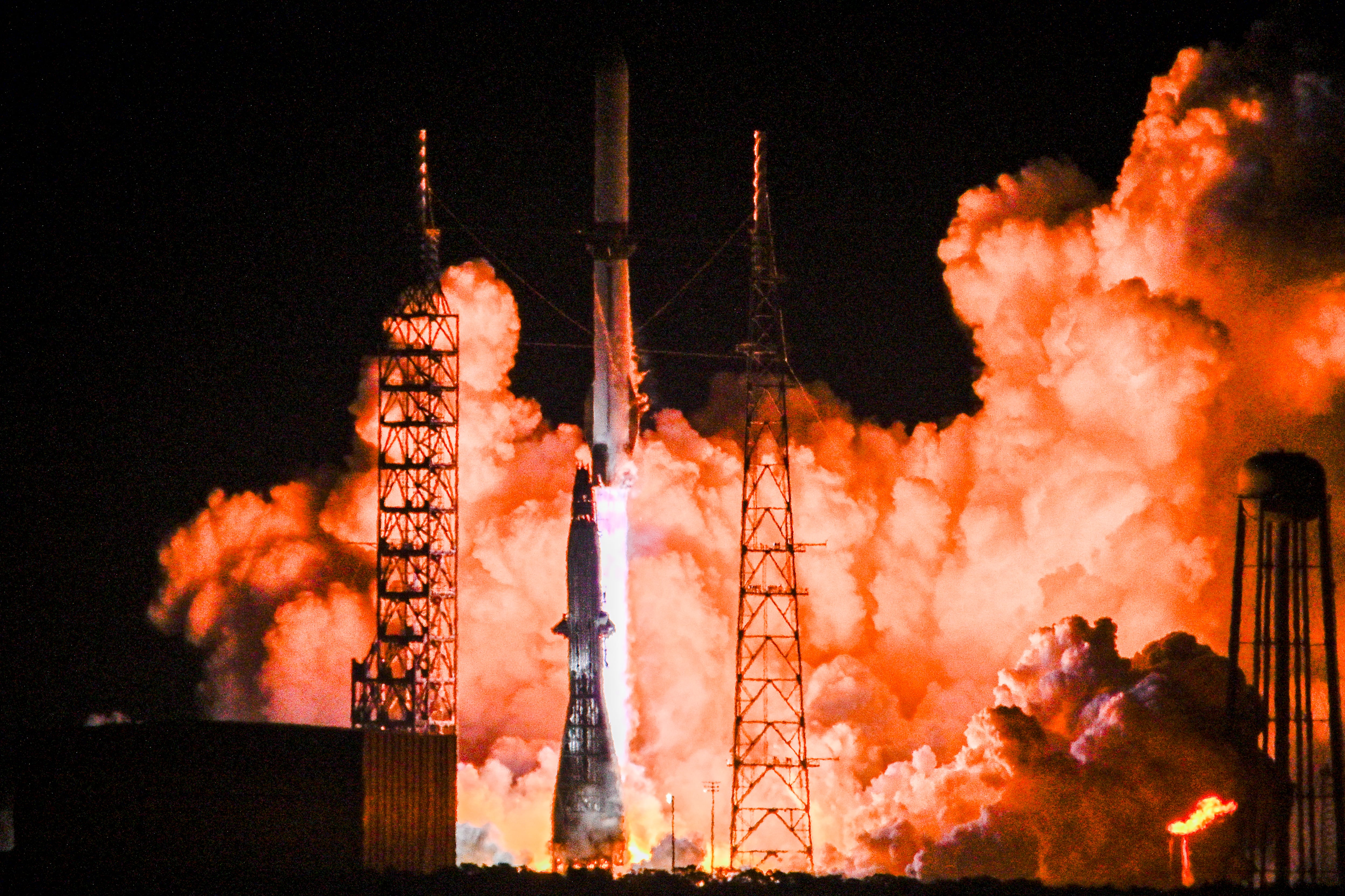Since first outlining the concept of the third offset strategy, Deputy Defense Secretary Bob Work has been making the rounds to stress the initiative is not merely about technology. He's described the offset strategy as hypothesizing that advances in artificial intelligence and autonomy will lead to a new era of human-machine collaboration and combat teaming – but he's emphasized it's really about increasing and strengthening conventional deterrence, he said recently.
In acknowledging that many are asking what the department is offsetting, Work explained at a symposium hosted by the Center for Strategic and International Studies October 28 that the first place to start is the competitors who are developing advanced capabilities. Work noted that these "pacing competitors," which he named as Russia and China, are not adversaries. The competitors are developing a lot of advanced capabilities that are potentially worrisome, he said.
"Offset strategies always happen when our potential competitors reach parity with us in certain areas," he continued. "And our potential competitors have reached parity with us in what we would determine battle networks." These battle networks, or theater wide battle networks, Work described as sensor grids that look at what is happening in theater, intelligence grids that make sense of what's happening and determining desired effects, effects grids to make those goals happen, and logistics and support grids that keeps the whole thing running.
Russia and China now have battle networks – theater wide battle networks, Work warned, that are approaching parity with the U.S. In order to strengthen conventional deterrence, the U.S. wants to make sure it can extend our advantage in that particular area, he said.
"Our adversaries – all of them and potential adversaries – are modernizing at a rate that we were not accounting for and our Army acquisition process has to move at the speed to create that offset," Maj. Gen. Walter Piatt, deputy director for operations, Army Rapid Capabilities Office, said during a panel discussion at the conference.
Appearing to piggyback on Work's sentiment that technologies are merely a small component of the offset strategy despite being a dominant component, Pierre Chao, founding partner at Renaissance Strategic Advisors warned that the offset should be about challenges. "I'm struck by how quickly we have moved to discussions about technology when it's really about the challenges," he said at the same conference.
He noted that during the first offset, which took place during the early 1960s and focused on organizing the Army around the deployment of tactical battlefield nuclear weapons to offset Russian military advancements, no one was calling it the first offset; those involved were just solving a problem. Chao said it was the same with the second offset, which saw the emergence of precision strike and stealth technologies. The precision revolution came about in Vietnam with the military asking how it could better hit certain targets, he said, adding the issue with stealth was the U.S. penetrating increasingly proliferative Soviet air defenses.
Nobody came along with stealth ahead of time with the technology to solve the problem, he said. "I would argue if the third offset is to meet its goal, the best way to incentivize industry is not tell them I need a better blank, this is my number one problem, you solve it," he asserted. "The answer could be anything that we don't know."
Vice Chairman of the Joint Chiefs of Staff Gen. Paul Selva said Oct. 28 that the third offset isn’t an answer, it’s a question. "It questions our ability to be able to offset advantages we see emerging in potential competitors’ forces," he said. "I describe it as a journey, not a fixed point." If it were a fixed point in space, he said he would simply drive requirements to that end.
While technology and capabilities are just parts of the offset strategy, they're important components in ensuring realized capabilities for achieving the deterrence Work discussed. Certain technological advancements could, in fact, lead to eventual larger-scale deterrence.
Arati Prabhakar, director of the Defense Advanced Research Projects Agency, provided details regarding one of her agency’s projects, the Experimental Spaceplane. The program’s goal, she explained during a panel discussion, would be to significantly shrink the time it takes to get assets into space orbit. While it currently takes years, she said, current commercial advancements could shrink that timeline to months.
What would this mean for the Defense Department and deterrence more broadly? The game-changing factor, she said, is what if "you could put an asset on orbit tomorrow? Think about the deterrent effect on our adversaries, when they think about taking out our space assets when they know they can be put right back into orbit immediately."
This tracks similarly with the administration’s view of deterrence in space; deterrence by denial as explainedby Douglas Loverro, deputy assistant secretary of defense for space policy. Loverro said deterrence by denial, essentially shoring up space infrastructure, is a better path than deterrence through inflicting harm.
The Experimental Spaceplane seeks to go to space ten times in ten days, an inconceivable notion, Prabhakar noted.
In terms of utilizing technological advancements to get tools to troops in the short term, Work noted that the formerly unknown and still secretive Strategic Capabilities Office, launched in 2012 by now-Defense Secretary Ash Carter when he was DoD deputy secretary, was the spark that helped lead to the notion of the offset.
The Strategic Capabilities Office, or SCO, seeks to find innovative solutions to complex battlefield problems using existing systems in unconventional ways. "Consider this, a small spark has ended up becoming a department that is on fire to change itself into a department that can deal with the full spectrum of conflict, from the high end all the way down to counterterrorism, as opposed to where we were over the last decade, which is very focused in dealing with the unique emergence of terrorism in the modern age," SCO Director William Roper told reporters at the conference. "I think that the recognition of this by the secretary and the deputy secretary is the rare extend of a strategic move by leadership that is being put into effect. How often does the long term vision end up coming and being the thing that leadership says this is the thing driving us?"
"The long game is hard to champion," Roper added.
AI and Autonomy
As Work has previously noted in the past, technologies such as artificial intelligence, machine learning and autonomy are at the heart of this offset strategy to help operators and analysts better understand the world around them, going back to his notion of battle networks.
Work provided five examples of injecting AI and autonomy into these grids: autonomous learning systems that use big data to crunch numbers in ways humans can’t; human-machine collaborative decision-making that provides fused information and visualization coupled with machine-to-machine communication; assisted human operations to allow humans to make more informed decisions and to include physical assistance such as exoskeletons, wearable electronics and disposable sensors; advanced manned-unmanned system teaming; and finally, network-enabled cyber and electronic warfare, autonomous weapons and high speed weapons, all of which will be injected into these grids to impact performance.
Roper explained that when a major event occurs, he believes that somewhere on some website or social media post, someone took a picture that could have helped to forewarn or inform prior to the event. "That seems like a problem a machine could sort out…but it’s going to have to sort it out much faster than a person can," he said. "I could see us building someday AI systems that perform simple tasks in a predictable way…that would enable us to make decisions quicker without putting us on a dangerous slope."
To that end, Work provided a real-world example for how such a development might have had an effect. He used the example of the shoot-down of the MH17 passenger jet over Russian separatist-held Ukraine in July of 2014. In a slide, he showed a series of pictures that told the story of this event. The first image shows a Twitter shot of MH17 taking off. The next photo comes from parismatch.com and is a picture of a Russian SA-11 launcher with a serial number on it, date and time stamped near the village of the shoot down. Next, Bellingcat shows the same SA-11 with the same serial number in the same locations. Next is a Twitter shot of a missile rising at the time of the shoot down. Then a rebel leader takes credit for the shoot down on VK.com, which was taken down immediately, Work said. Finally, on YouTube is the exact same SA-11 with a missile rail that is mysteriously empty going into Russia.
Slide from Deputy Defense Secretary Bob Work's presentation on the third offset strategy at the Center for Strategic and International Studies October 28, 2016 depicting the timeline of the MH17 shoot down curated by artificial intelligence from surveying social media.
Photo Credit: Mark Pomerleau/Staff
Learning machines did this without any human interaction, he said. "If we had had this capability at the time of the MH17 shoot-down...we could prove this was truly a Russian missile provided to the separatists in eastern Ukraine and they were responsible for the shoot down."
This type of capability will allow new indication and warning in gray-zone operations, he said referencing the so-called little green menphenomena. Learning machines can say there are influence operations going on – we don’t know who is doing it, but here are the key parts of it, he added.
However, it will not be as easy as flipping a switch. "All of you, sometime today will interact with a piece of artificial intelligence that makes you do something a little faster, a little better, a little more efficiently," Selva told the audience. "We have not to this point harnessed the capability of that part of our IT inventive and innovative community and applied it to broad military problems. We have in very narrow spaces."
Mark Pomerleau is a reporter for C4ISRNET, covering information warfare and cyberspace.








